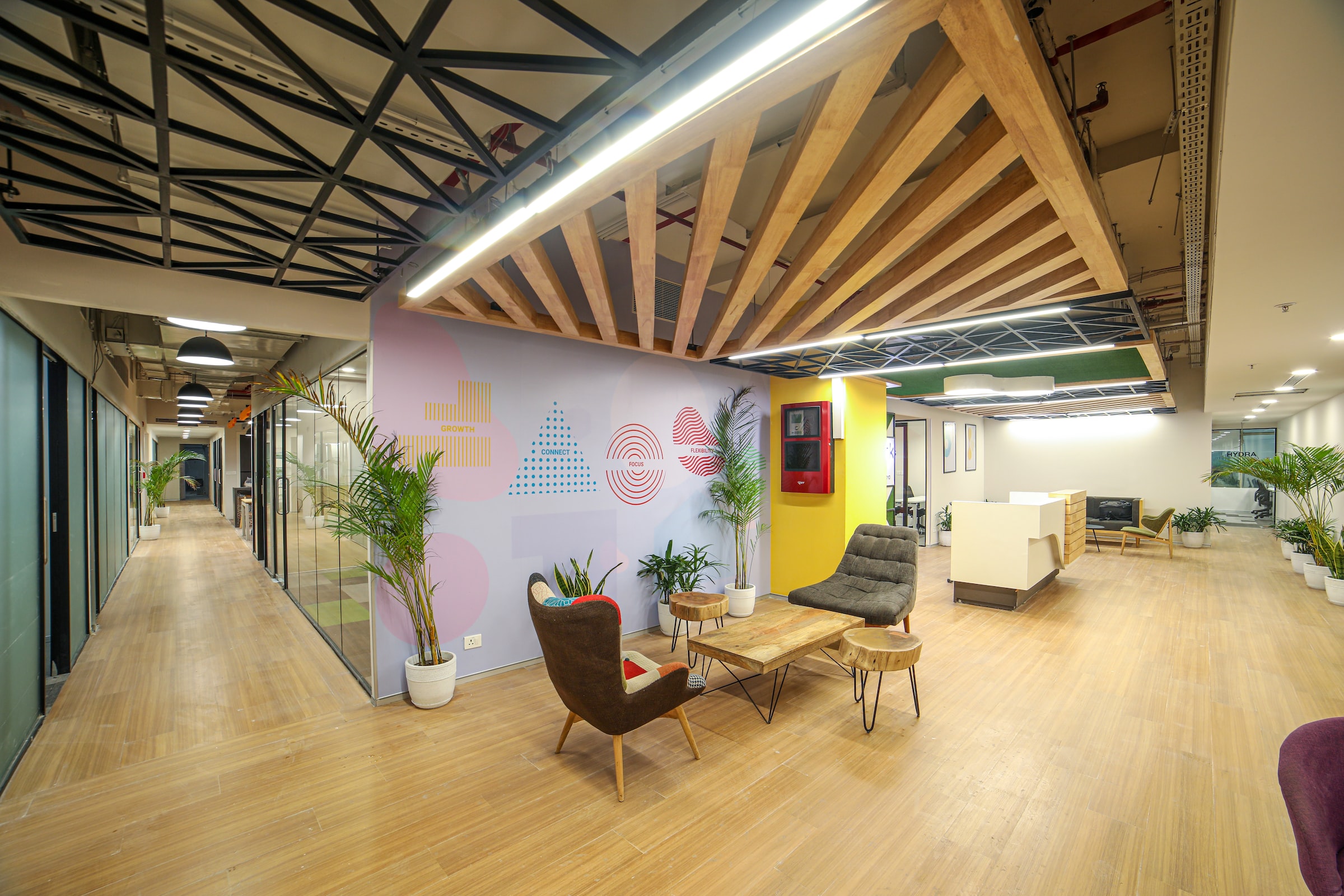There’s no question that the pandemic has changed how people work. In this episode, your host Sabine Ehm speaks with Jon Sheh on how working from home looks different for everyone. They discuss how companies can adapt to change to help create an inclusive workplace experience.
Our inclusive workplace expert
Jon Sheh is the Director of the workplace strategy at Johnson & Johnson. When Sabine and Jon met, she was immediately taken aback by his diverse background. Jon holds degrees in both engineering and business. He has worked in several fields, ranging from process engineering to apparel. He uses his broad background and pulls from a range of experiences to form decisions in corporate real estate.
Although Johnson & Johnson is often perceived as a consumer product-based company, their largest sector is pharmaceuticals, followed by medical devices. With over 200 companies working at Johnson & Johnson, there are roughly 50 million square feet of workspaces, and nearly 1000 properties. Jon has his hands full with optimizing their portfolio, creating an inclusive workplace, and configuring spaces for success.
Adapting workplace strategy to the new employee demands
These clips give insight into how Jon perceives the future of CRE and how companies can leverage unique employee situations.
“Talent has started to change their perception of what they want, and what they demand from companies. Not just at J&J – at many companies. And, companies are reacting to try to maintain the best talent. They try to maintain the continuity of talent. Different businesses have different needs to do that.” – Jon Sheh
With people working from home, there has been a huge influx of knowledge-workers reevaluating their lifestyles and moving to less-populated areas. “The best talent is going to migrate to the places that best accommodate how they want to work and live their life. These two are inextricably connected”. Jon speaks from experience, as he just moved from New Jersey to Colorado himself.
Post-covid workplace trends
The pandemic has loosened the definition of what a physical workspace must be. It shaped new workplace trends. In turn, this has given employees room to make decisions for themselves. Not to mention, many employees have learned what 1-2 extra hours a day not spent sitting in traffic can do for their lives. How companies react to this new mindset will set the stage for where this migrated talent ends up. He means both physically and at which company.
“I’ve been on the phone with coworkers. Some of them had their child next to them doing school work because that was the place that they had for that. Other options for those people are the biggest opportunity for companies. They can turn on this flexibility in a way that is both financially efficient and flexible. And it provides another mechanism for people to get creative thought.” – Jon Sheh
Employees that are further in their career tend to make more money. Therefore, they can live in larger spaces than their successors. Leadership works from home in their private at-home office. But they must not overlook their employee’s WFH environments. Moreover, companies can learn how to leverage these employee situations when building out their CRE portfolio.
There is no single best work environment
Jon suggests companies can leverage 3rd party locations, office sharing, and co-working methods. We can also build more “near-the-bedroom” communities. These provide a flexible structure for those wanting collaboration spaces without the commute. These considerations will all play a role in helping create an inclusive experience in the workplace for employees in different locations.
“It’s really nice to have a network of people in different industries. Different industries need different things. There isn’t a universal solution to workplace strategy or the best work environment. It’s not even worth thinking about.” – Jon Sheh
Jon believes in keeping your eyes and ears open everywhere you go. “Restaurants, shopkeepers, stadiums. The ideas are everywhere for the workplace.” Every company has its own needs. So, there is no one-size-fits-all solution. Being dynamic in decision-making can be the key to building an optimized, successful CRE portfolio.
Jon uses airports as an example of strategic movement outside of the typical office space. Over the past several years, airports across the globe have shifted restaurants into heavily-trafficked corridors. Before, they used to hide them away in corners. We can only imagine how this will transform company office space.
Challenges of the new workplace culture
“Over the last 50 years, there have been all of these big office complexes built. They’re oppressive and awful work environments. And the design is obsolete. I would love to solve for what to do with those assets that really create something amazing for the future.” – Jon Sheh
When Sabine asked what problem he’d love to solve, Jon immediately speaks to the big, clunky, dysfunctional workspaces. Those were built over the last several decades with a old workplace culture. He has the protection of the environment at the heart of his decision-making. So, Jon admits these spaces should not be torn down. Rather, we should rehabilitate them into modern offices. While their functionality is obsolete, the structures themselves have a lot of lifespans left. Therefore, they must evolve. “There’s a huge amount of money if someone can solve that problem.”
Conclusion for an inclusive workplace experience
There’s a lot to think about as companies pivot towards new work environments. Jon stresses that one must understand and quantify the needs of every team and every employee when making decisions. We are moving into a post-pandemic climate. So, we can assume that many employees will want to continue to work remotely. It could be from co-working spaces, 3rd party offices, or simply from home. Some companies will best adapt to these changes and create an inclusive workplace for all employees. And they will be able to hold on to the best talent on the market.
Listen to this (episode No. 4) and other podcast episodes.

 8’
8’




